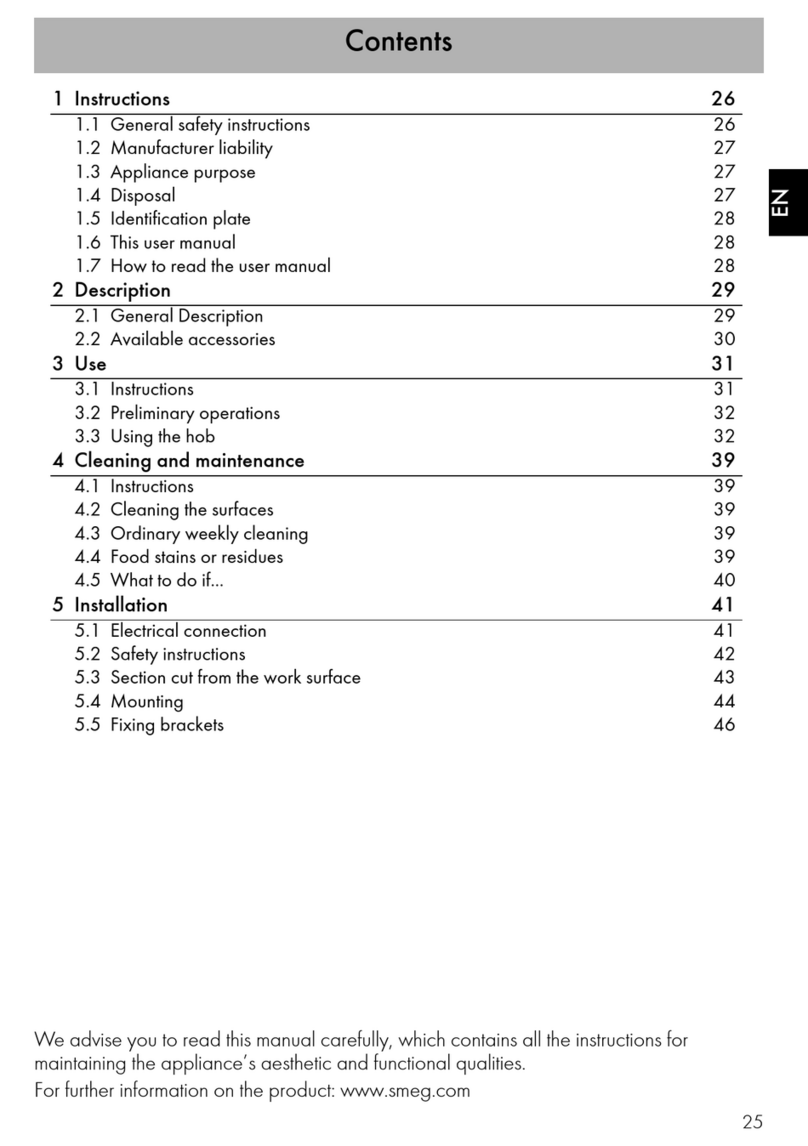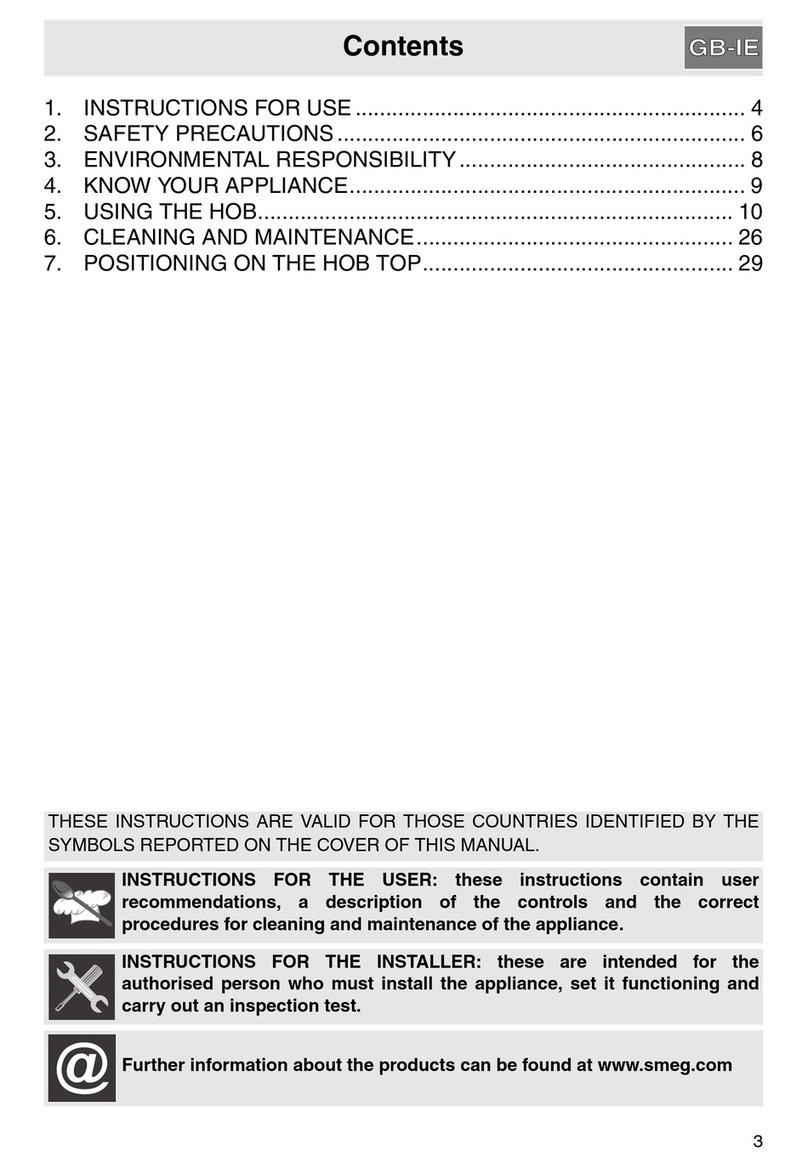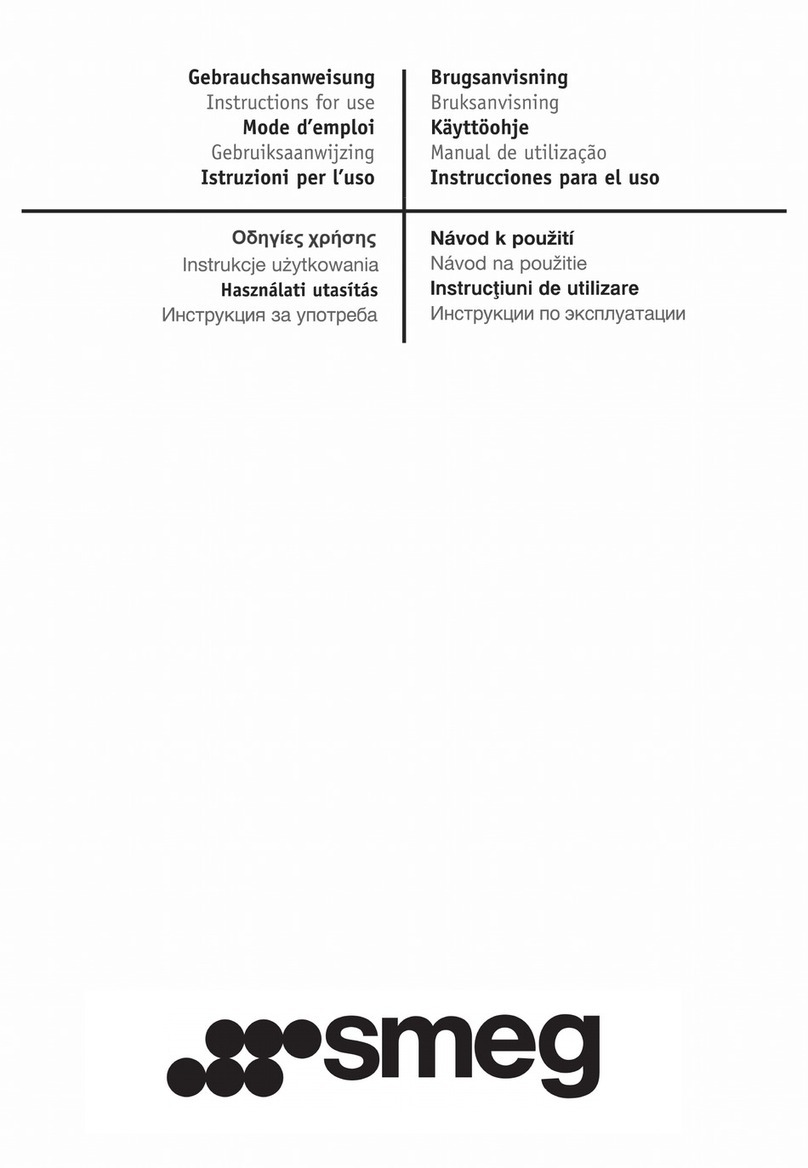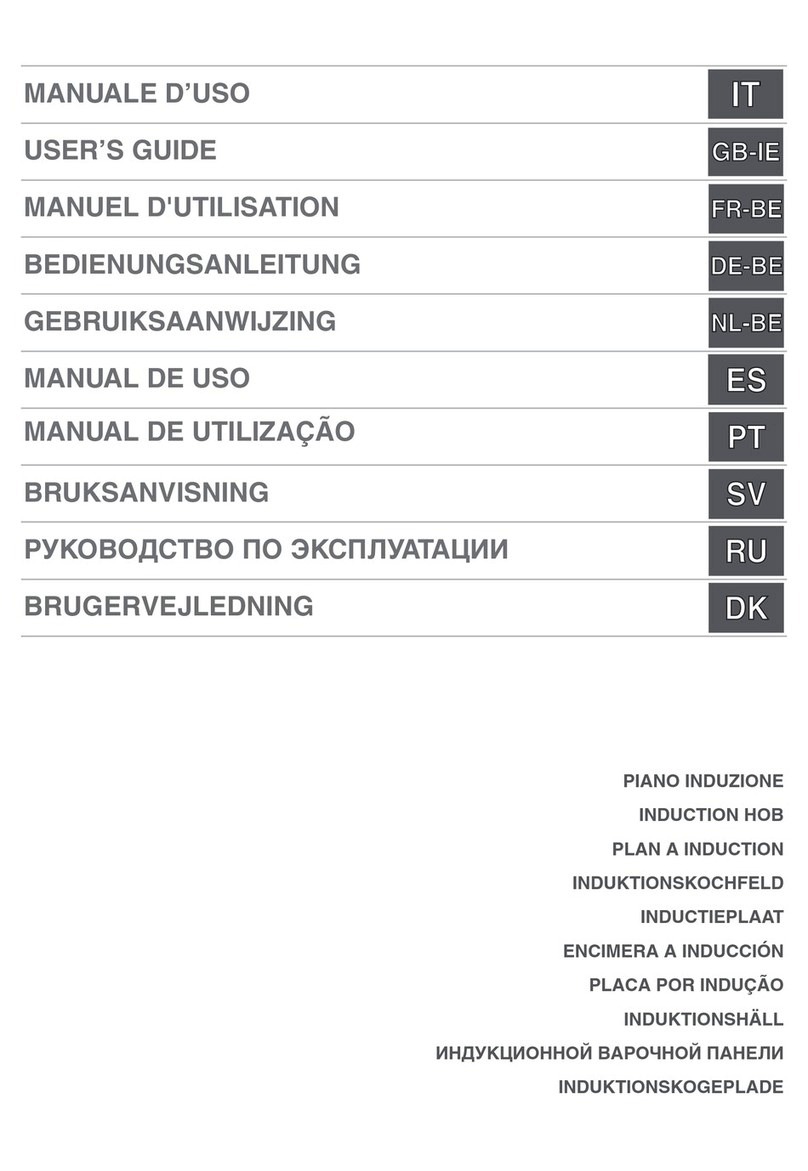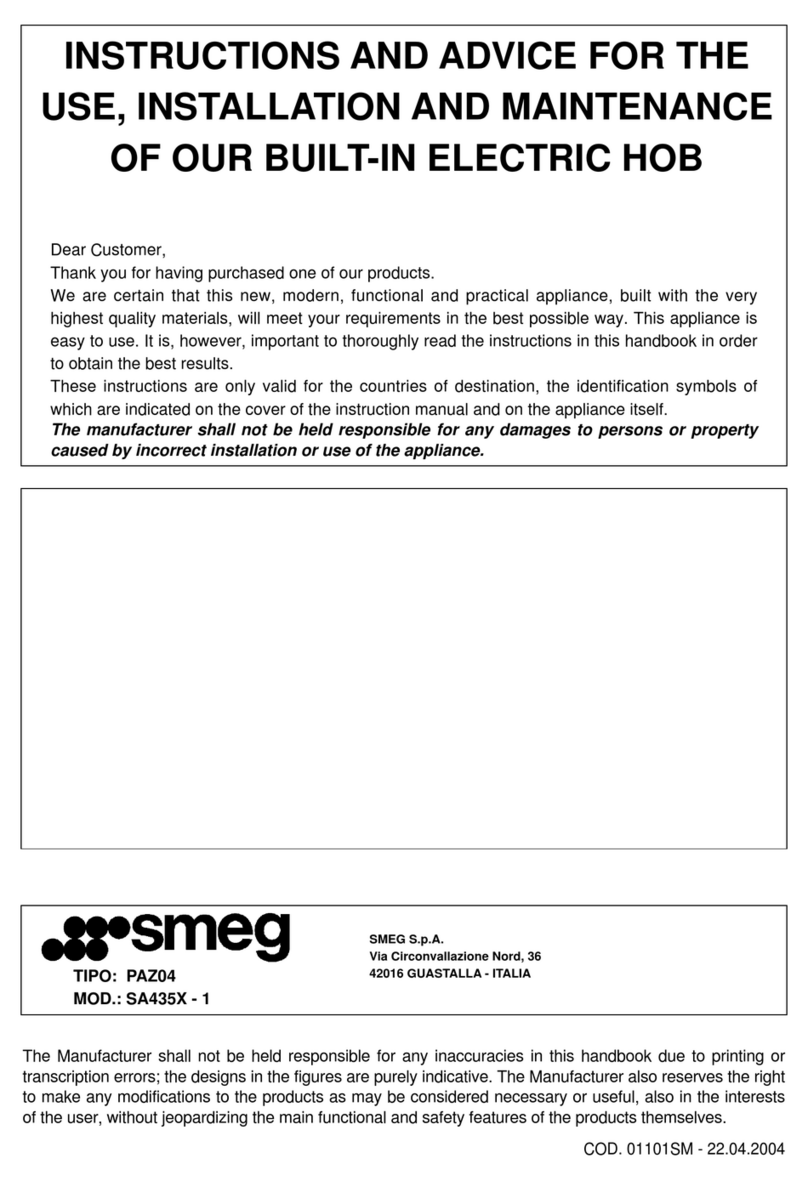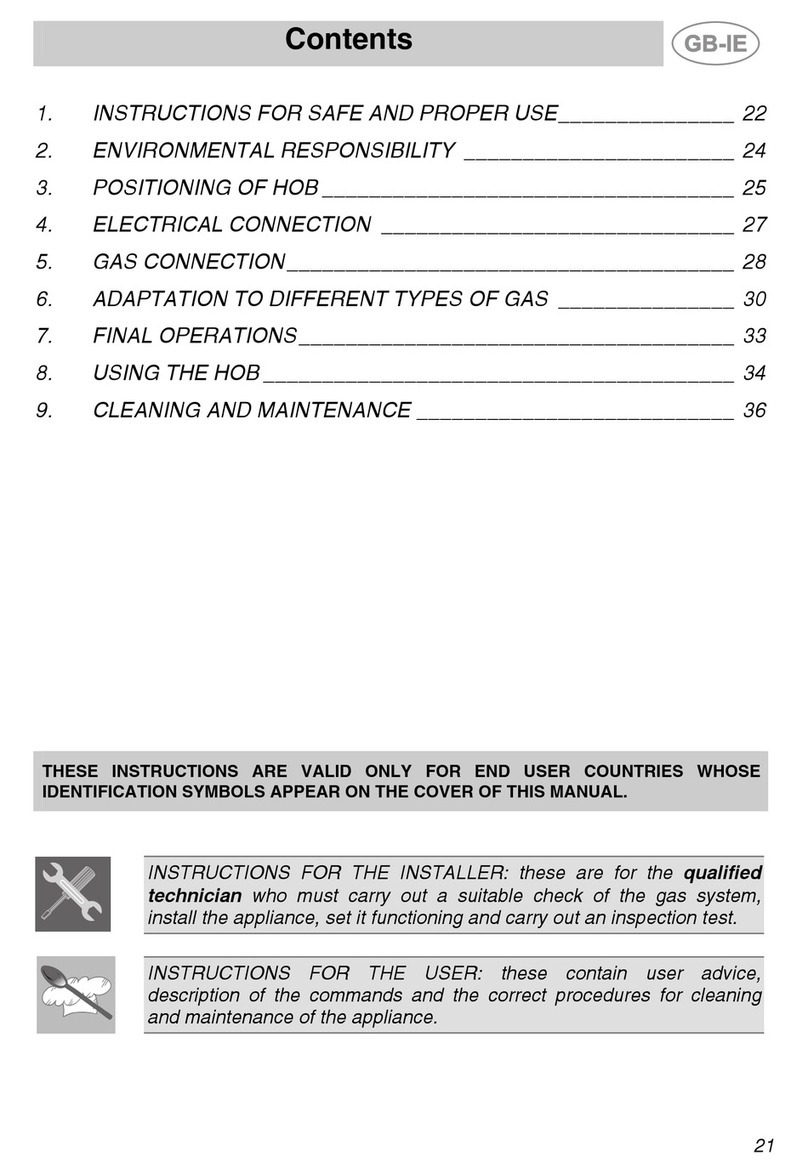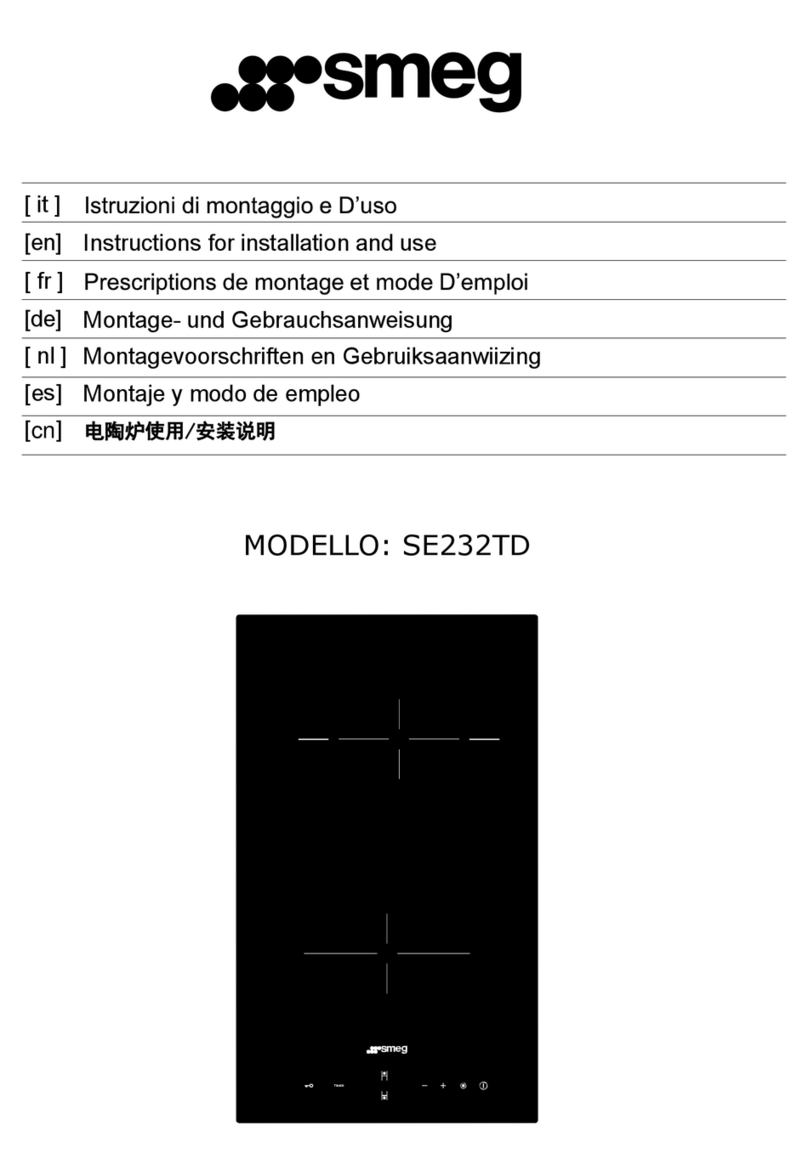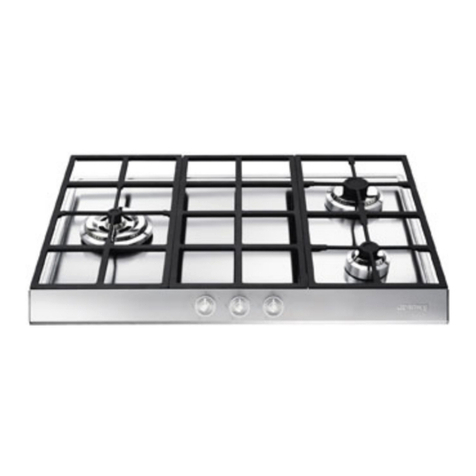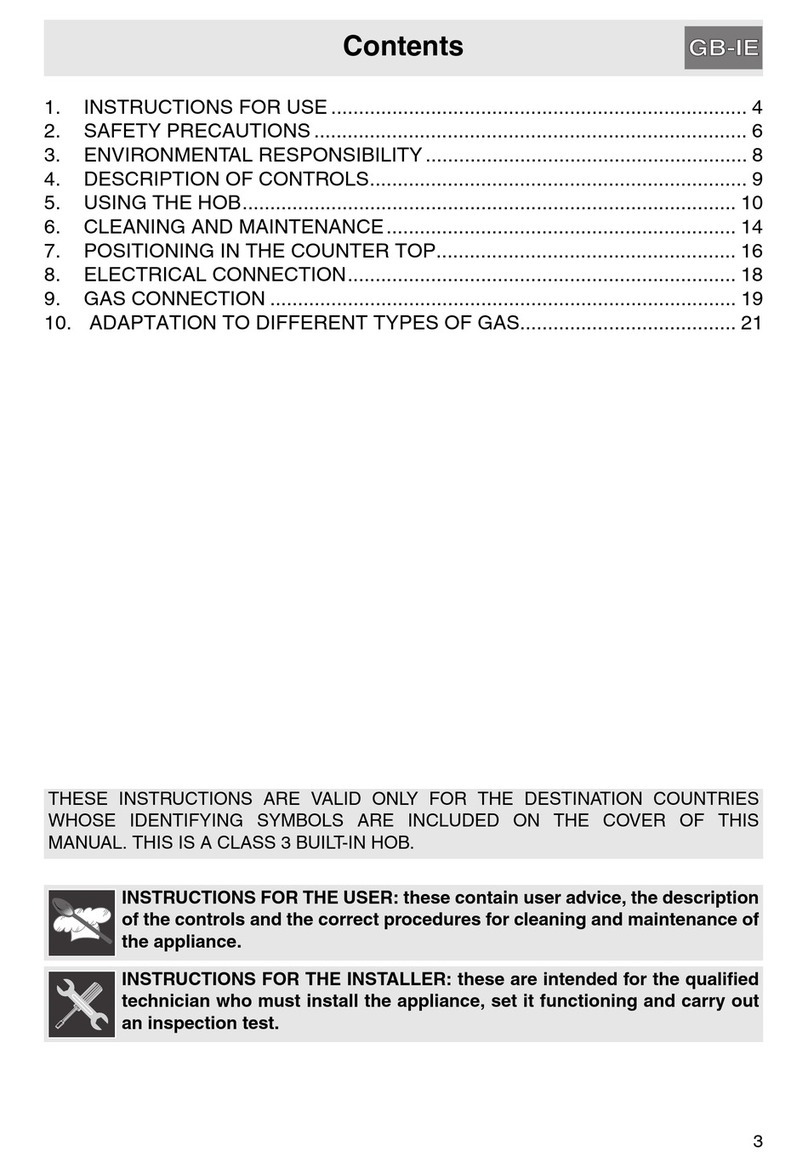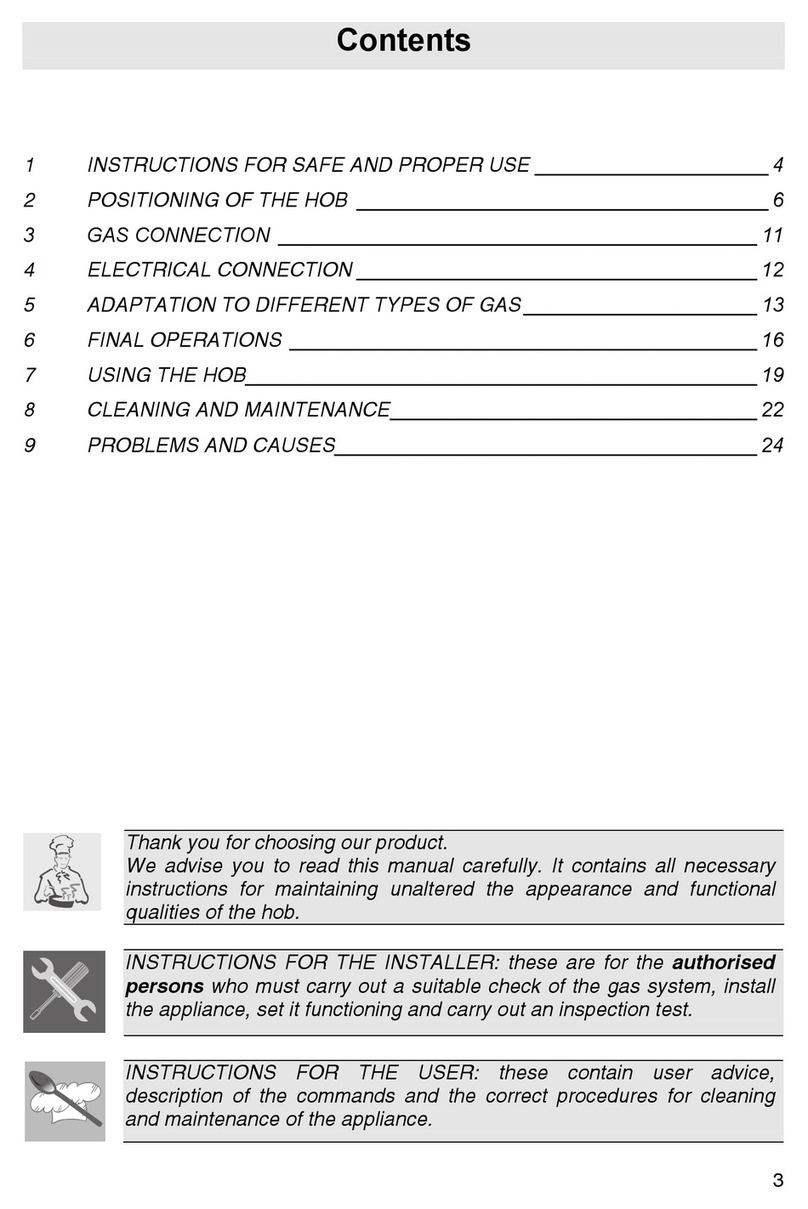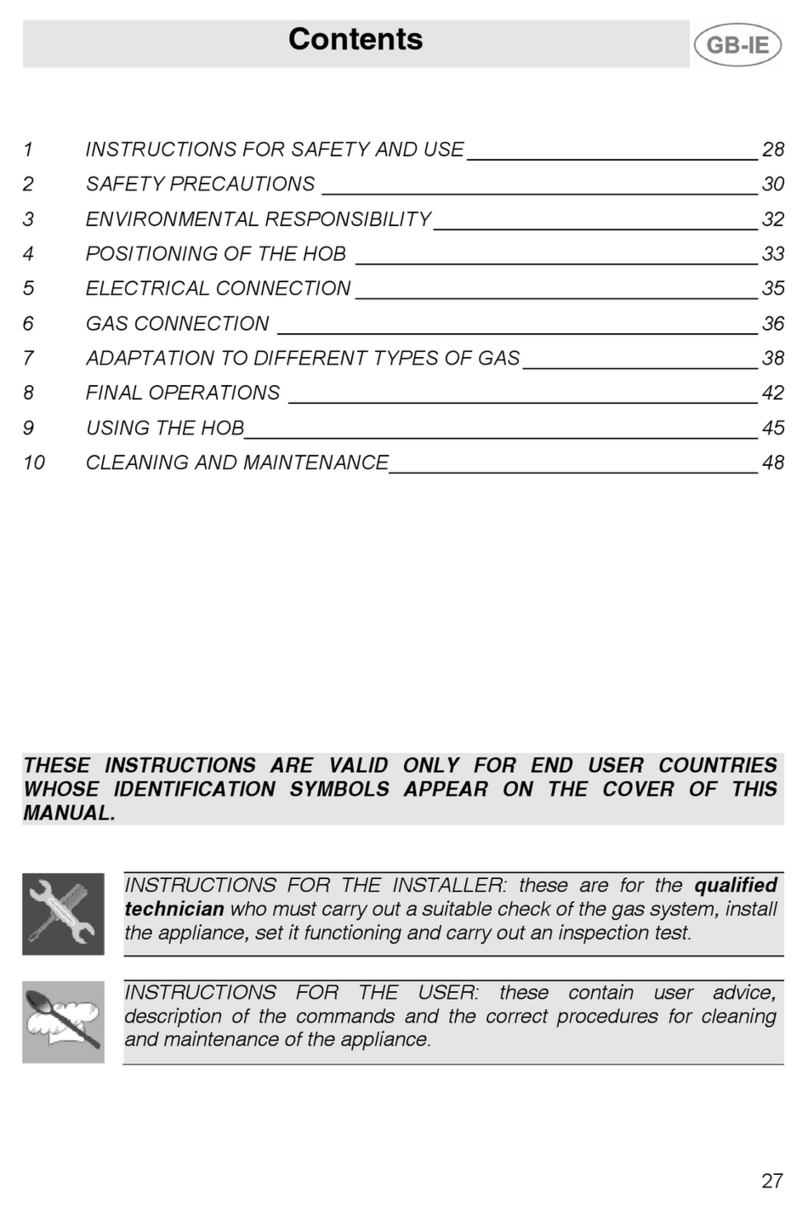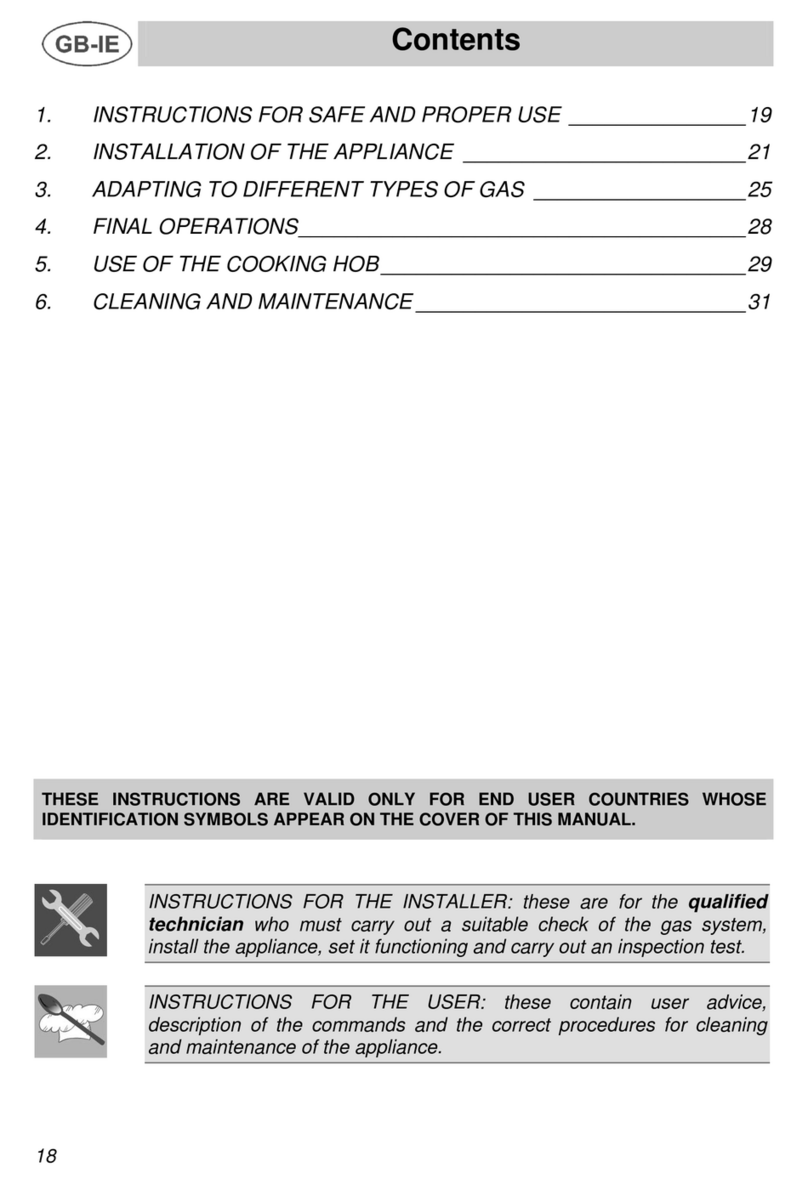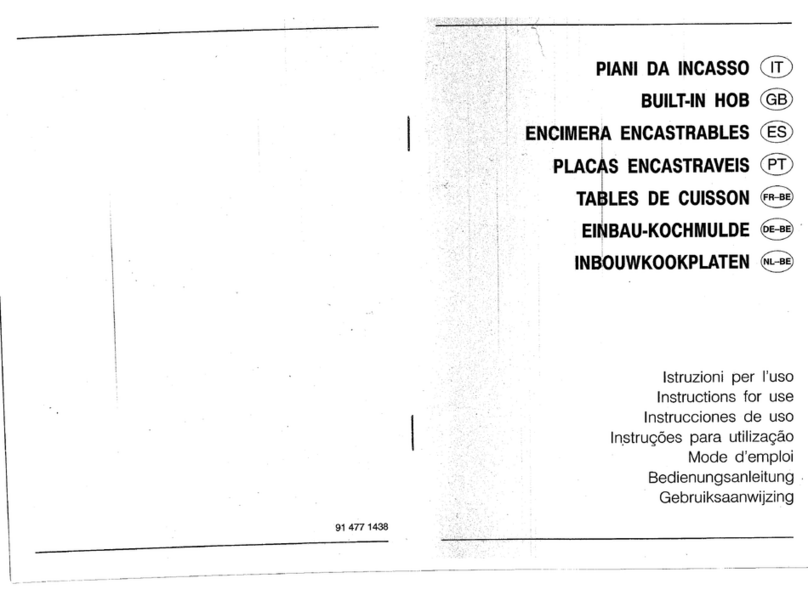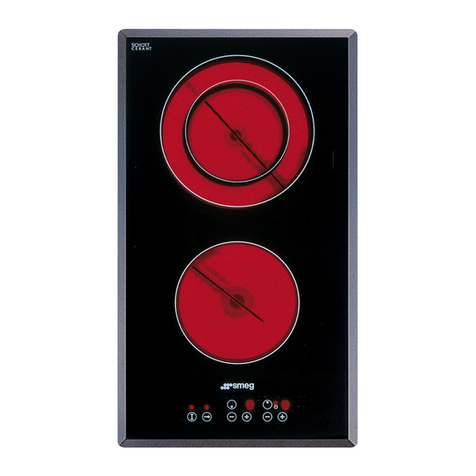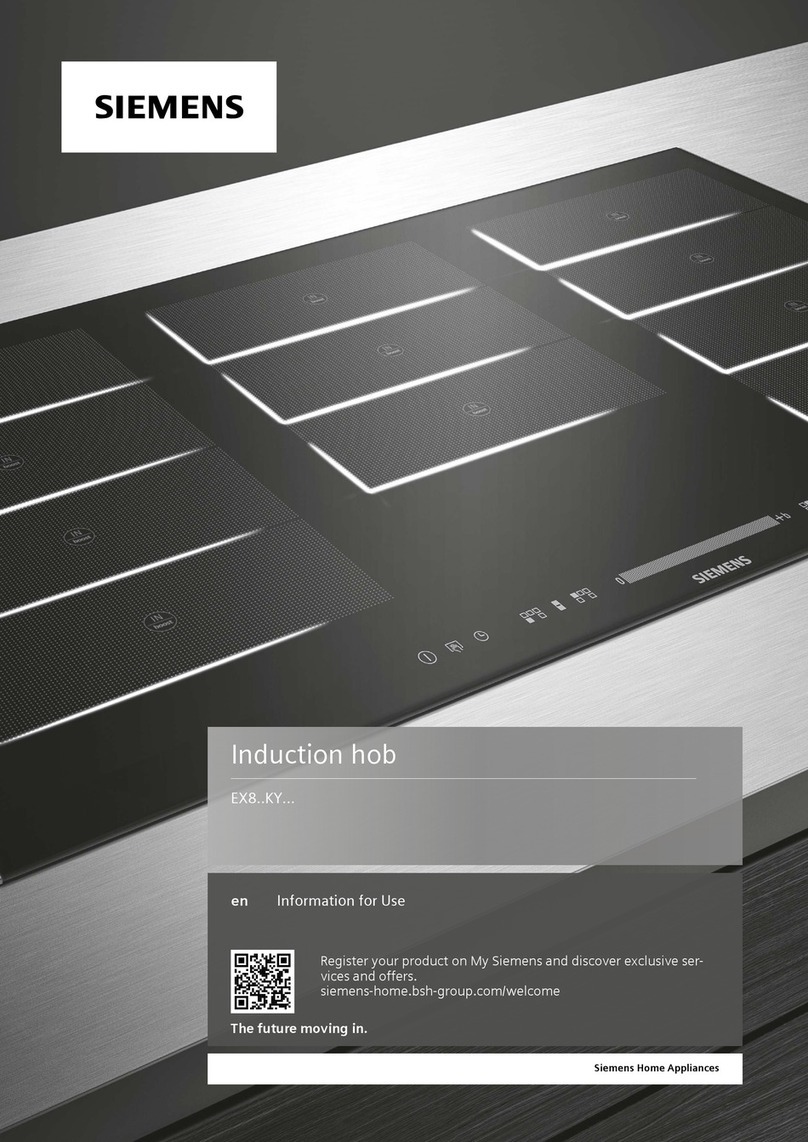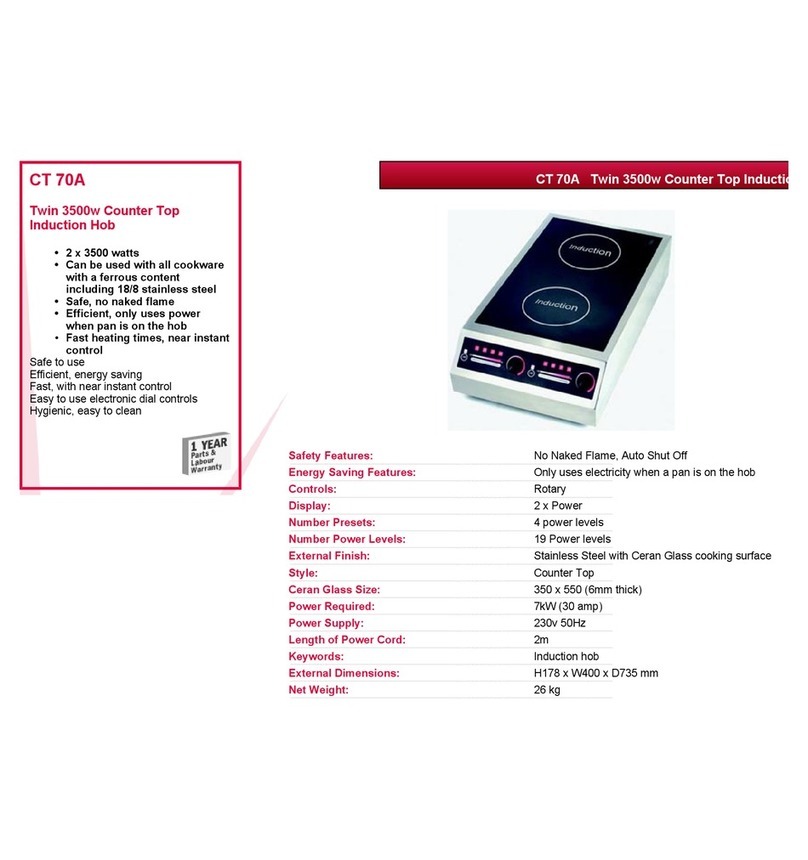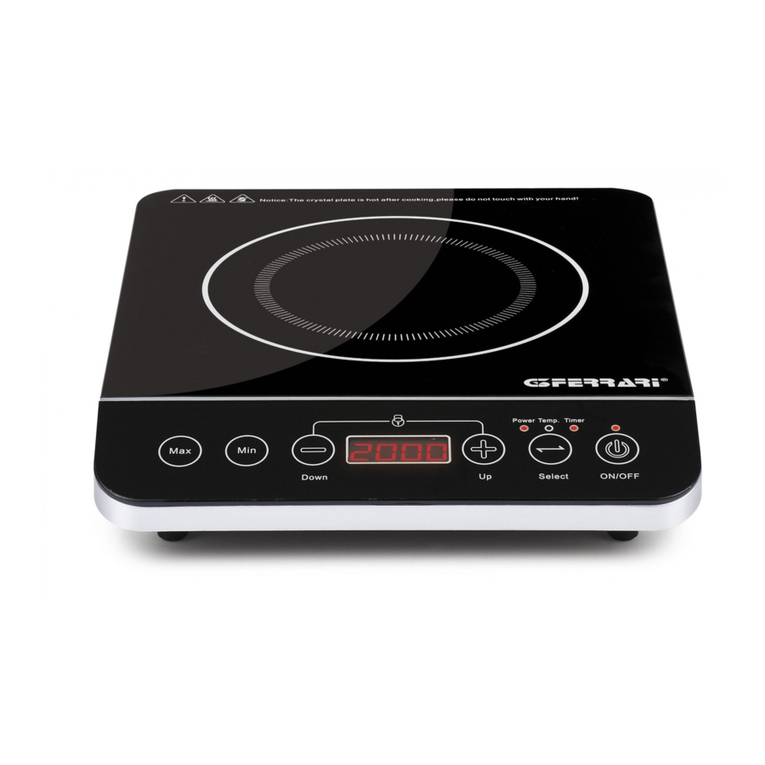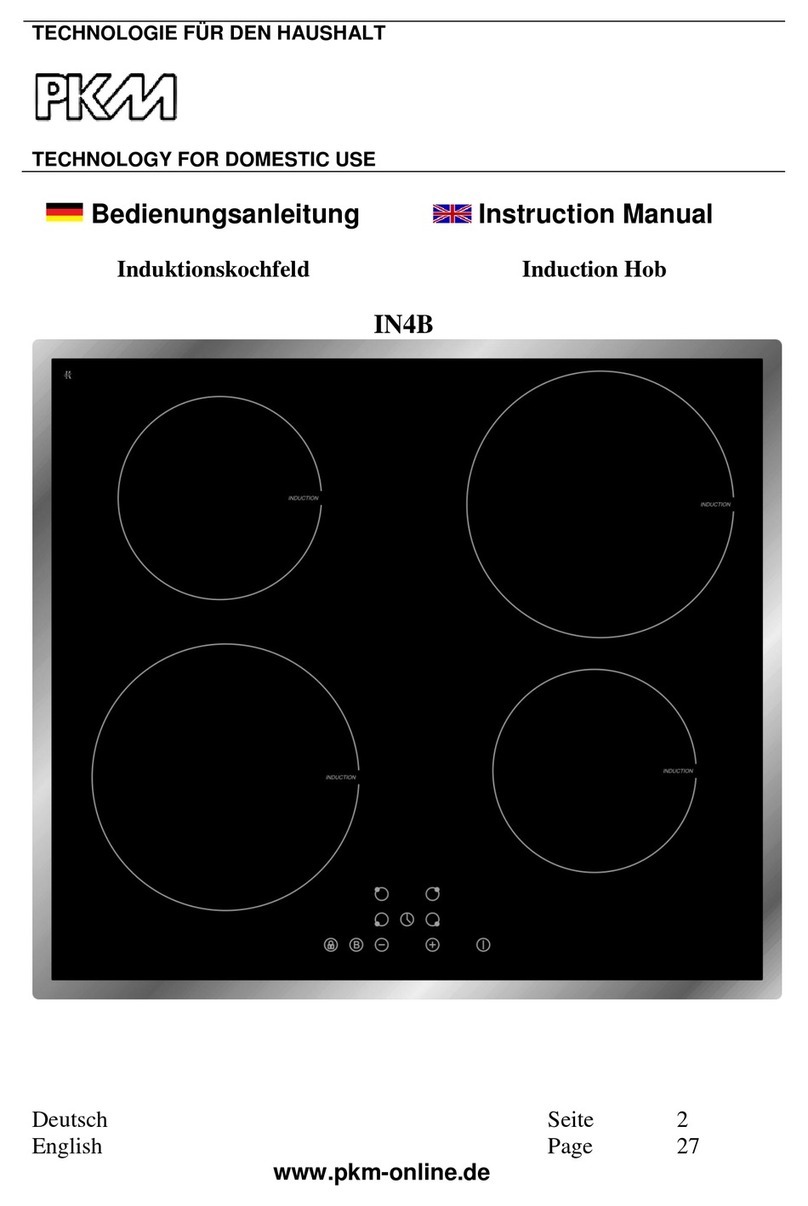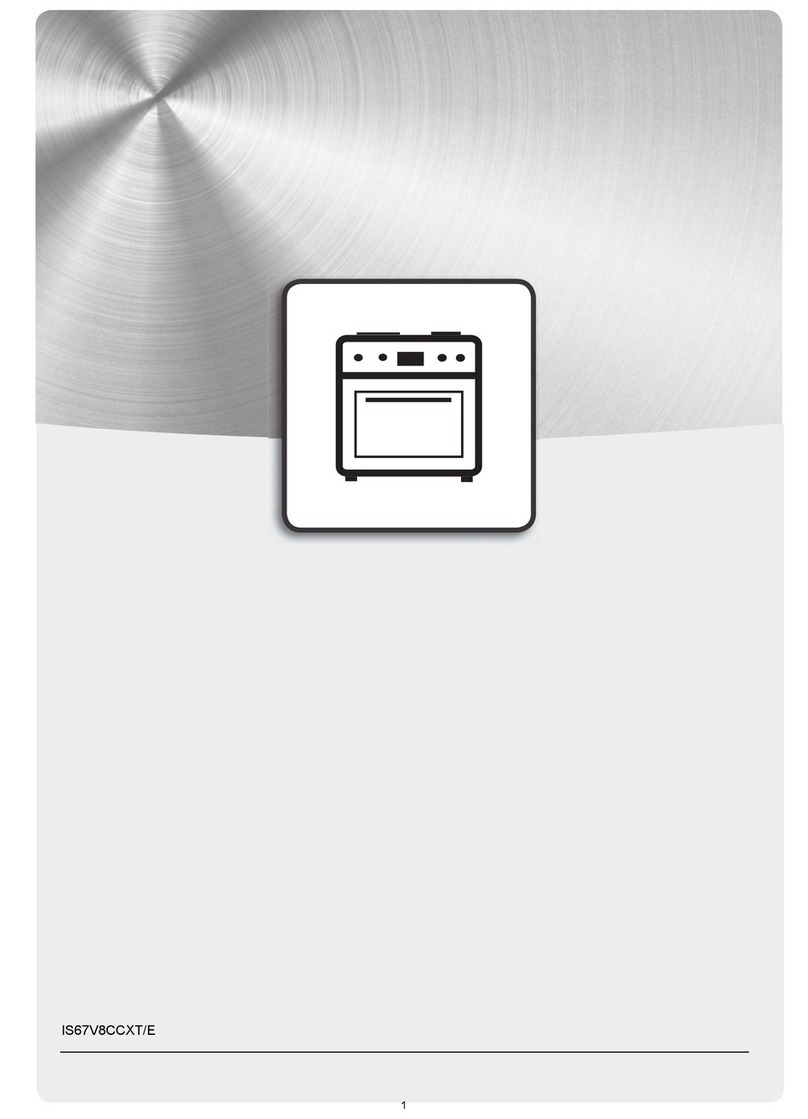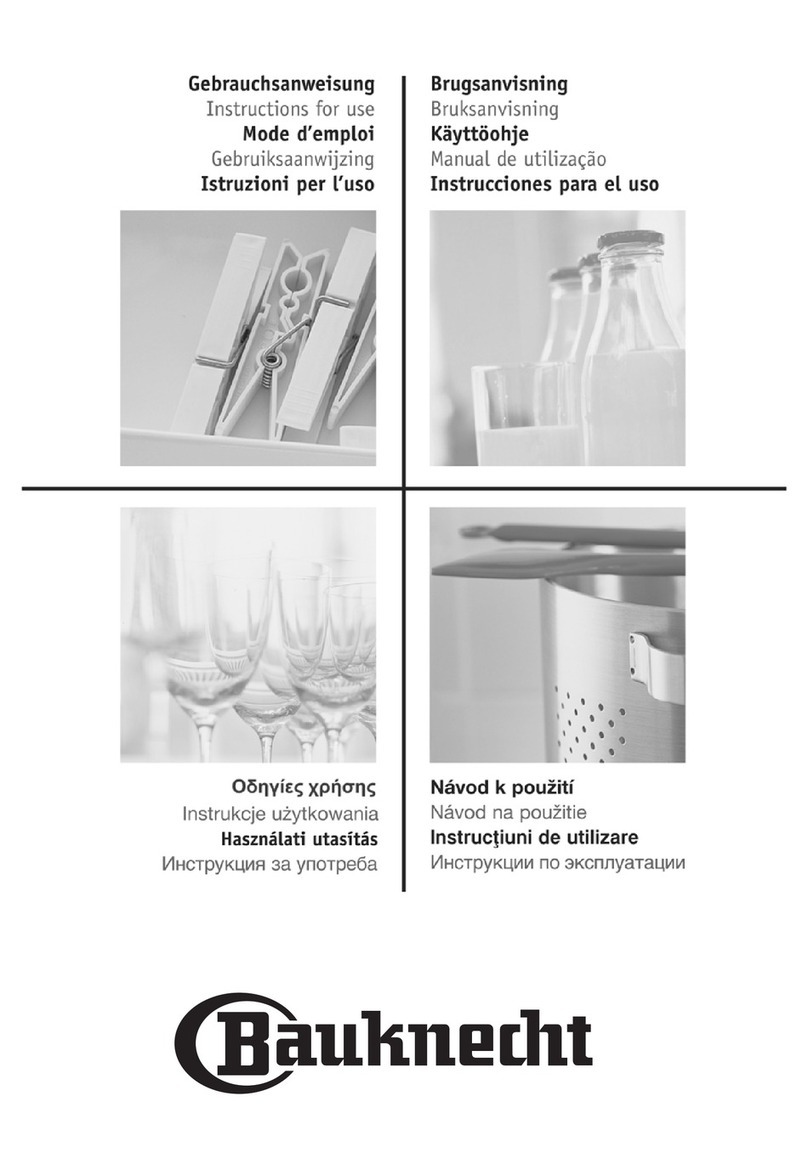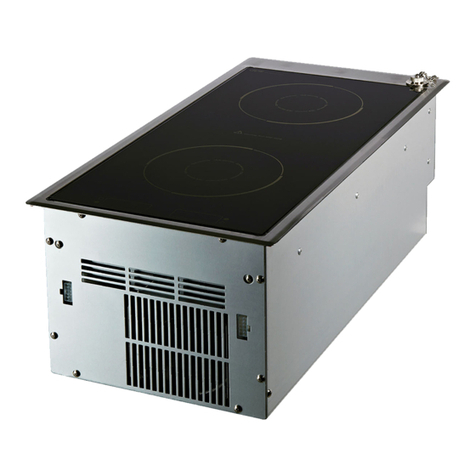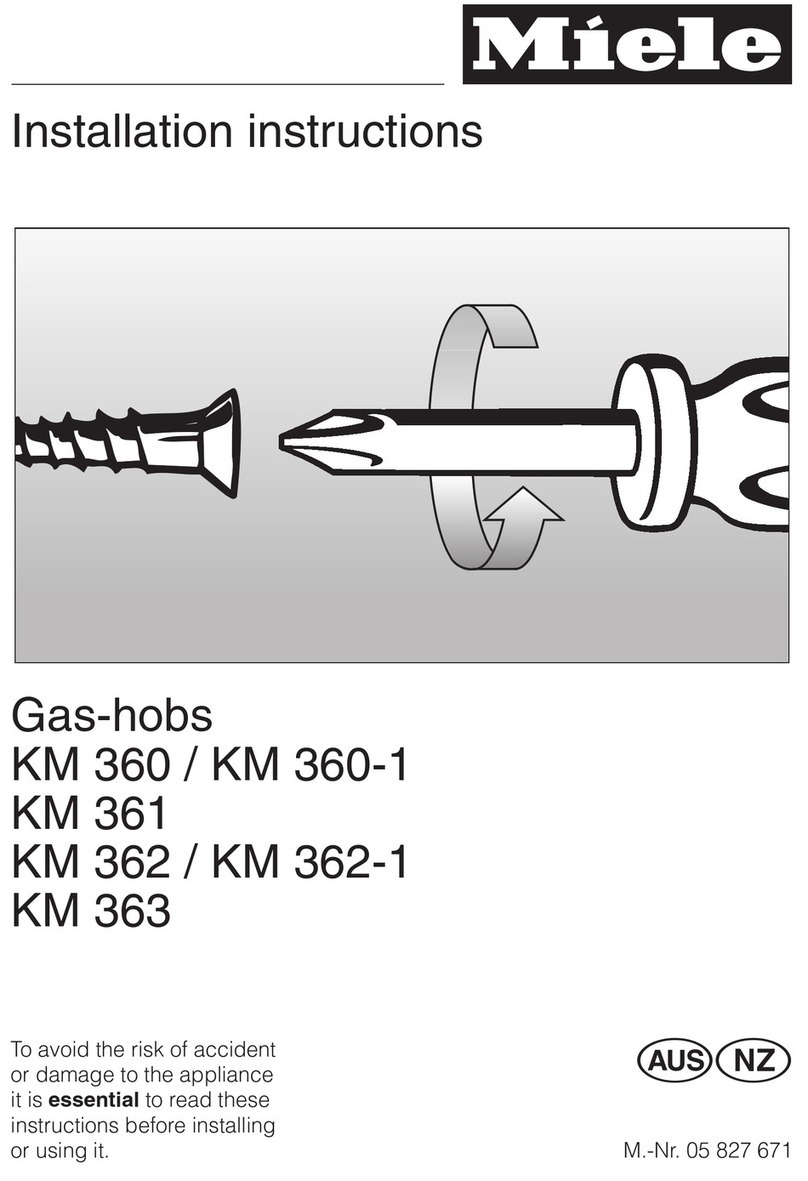
Use
12
3 Use
3.1 Instructions
3.2 First use
1. Remove any protective film from the
outside or inside of the appliance,
including accessories.
2. Remove any labels (apart from the
technical data plate) from accessories.
3. Remove and wash all the appliance
accessories (see 4 Cleaning and
maintenance).
3.3 Using the hob
All the appliance's control and monitoring
devices are located together on the front
panel. The burner controlled by each knob
is shown next to the knob. The appliance is
equipped with an electronic ignition device.
Simply press the knob and turn it anti-
clockwise to the maximum flame symbol,
until the burner lights. If the burner does not
light in the first 15 seconds, turn the knob to
and wait 60 seconds before trying
again. After lighting, keep the knob pressed
in for a few seconds to allow the
thermocouple to heat up. The burner may
go out when the knob is released: in this
case, the thermocouple has not heated up
sufficiently. Wait a few moments and repeat
the operation. Keep the knob pressed in
longer.
Improper use
Danger of burns
• Make sure that the flame-spreader
crowns are correctly positioned in their
housings with their respective burner
caps.
• Oils and fat could catch fire if
overheated. Be very careful.
• Do not leave the appliance unattended
during cooking operations where fats or
oils could be released.
• Do not spray any spray products near
the appliance.
• Do not touch the appliance's heating
elements when it is running. Leave them
to cool before cleaning.
• Do not allow children younger than 8
years old to come near the appliance
when in operation.
Improper use
Risk of damage to surfaces
• Do not use aluminium foil to cover the
burners or hob body.
• The cooking vessels or griddle plates
should be placed inside the perimeter of
the hob.
• All pans must have smooth, flat bottoms.
• If any liquid does boil over or spill,
remove the excess from the hob.
In case of an accidental switching
off, a safety device will be tripped,
cutting off the gas supply, even if
the gas tap is open. Return the
knob to and wait at least 60
seconds before lighting it again.

